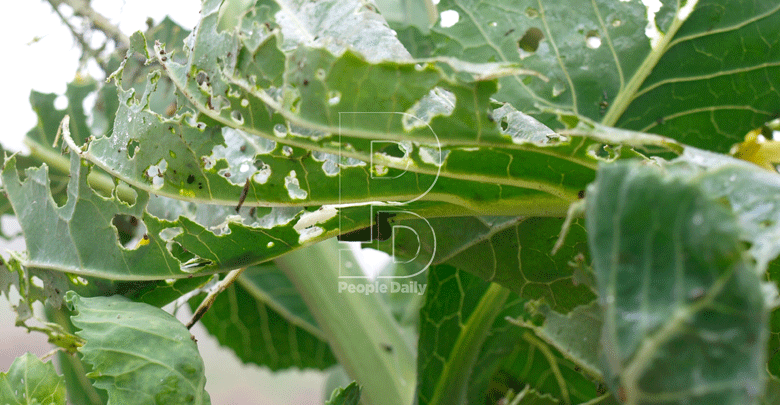Slug menace wrecks havoc on vegetable farms in Nyandarua
By Joseph Maina, January 19, 2021Slugs are capable of causing destruction on your farm. These slow moving molluscs with an avaricious appetite for vegetables can chomp away at your entire cabbage or sukumawiki field leaving you with frayed leaves.
They bore unsightly and irregularly shaped holes on leaves, while leaving films of a sheeny, gooey mucous in their trail.
The end result, at least in this market, is a jarred leaf pockmarked with what seems like bullet holes; an unaesthetic veggie that would only serve to nauseate the buyer.
“They are, especially rife in the wet seasons,” says Jeremiah, a farmer in Nyandarua county, adding “At one recent instance, some farmers barely harvested anything.”
Slugs, notes the National Plant Protection Centre (NPPC) of the Royal Government of Bhutan, do most of their damage at night and on wet, cloudy days.
In warm and wet climates slugs and snails can be active all year. “During the day they hide in dark, moist sites under decaying leaves, low growing plants, dirt clods, pots or debris,” states the NPPC.
“Slugs are also quite capable of burrowing into the soil by following decayed plant roots, cracks, worm tunnels and along boards surrounding raised beds.
These pests are also excellent climbers and can be seen quite high in plants”.
Wet parts of the country are most likely to suffer attacks by these pestilent molluscs.
In recent years, parts of Nyandarua county have reported sightings of slugs in vegetable farms.
“It is a persistent problem, but it depends, also on the season,” David Gichuki, the Sub-County Agricultural Officer in Kinangop says.
“You’d get them, but rarely. These days they’re being reported regularly.
Climate change is a likely cause of the proliferation,” Gichuki told Agribiz.
He adds that the slugs aren’t picky eaters. “They eat almost anything so long as it is green.
They’ll eat anything from carrots to cabbages, kale and potato vines. They’re not host specific,” he says.
Slugs, notes Bhutan’s Department of Agriculture, are best described as snails without shells.
They are soft bodied, generally brownish or grayish, with eye stalks, and vary in size from a quarter of an inch to two inches or longer.
“Slugs leave a silvery slime trail that they secrete (mucus) as they move.
This mucus is also used as the slugs navigation system, as slugs will find their way back to their tunnels and feeding sites by following their mucus trail.”
It adds that most slugs live underground, while the ones that can be seen feeding above ground are only approximately five per cent of the total slug population.
Cool weather, rain and fog is the best weather for slugs since they don’t have an outer shell to protect them, they may dry out in dry and warm weather.
Humans can be infected by accidental consumption and contact with slugs and snails in fresh produce, according to NPPC.
The slime from these animals can contain nematodes and may also constitute a disease risk.
Common predators of slugs, include hedgehogs, birds, toads and ground beetles.
Some farmers have been known to use salt, which they pour on the slugs to kill them.
The agricultural officer, however, discourages this method, as salt has a long lasting effect of diminishing the soil quality.
Several chemical control methods have been tried, with varying degrees of success.
Gichuki says a commonly deployed method of controlling slugs is by luring them to a common ground, and then destroying them.
“Normally, we attract them using alcohol to one small point. This could be an area measuring, say, five by five metres.
Once they throng the spot, you are then able to spray them with a small amount of chemical,” he explains.
This is an efficient, safe and cost effective method of controlling the vermin.
It is a particularly helpful approach, especially in the absence of financial muscle to invest heavily in chemicals.
Overall, the agricultural officer says the problem calls for the cooperation of farmers and agricultural officers in a region.
“We have been conducting demos, showing the farmers how to control these pests,” he says, noting that some parts of Magumu and Githabai in the county have reported a higher incidence of the pest.
Gichuki, however, says that the problem has not reached crisis levels yet.
Other methods of slugs control, include elimination of their habitats and hiding places, use of repellents, such as wood ashes, mulching and use of predators like chickens and ducks roam the vegetable garden.
You may also pick the slugs by hand and destroy them, but one is advised to wear gloves for the exercise.
